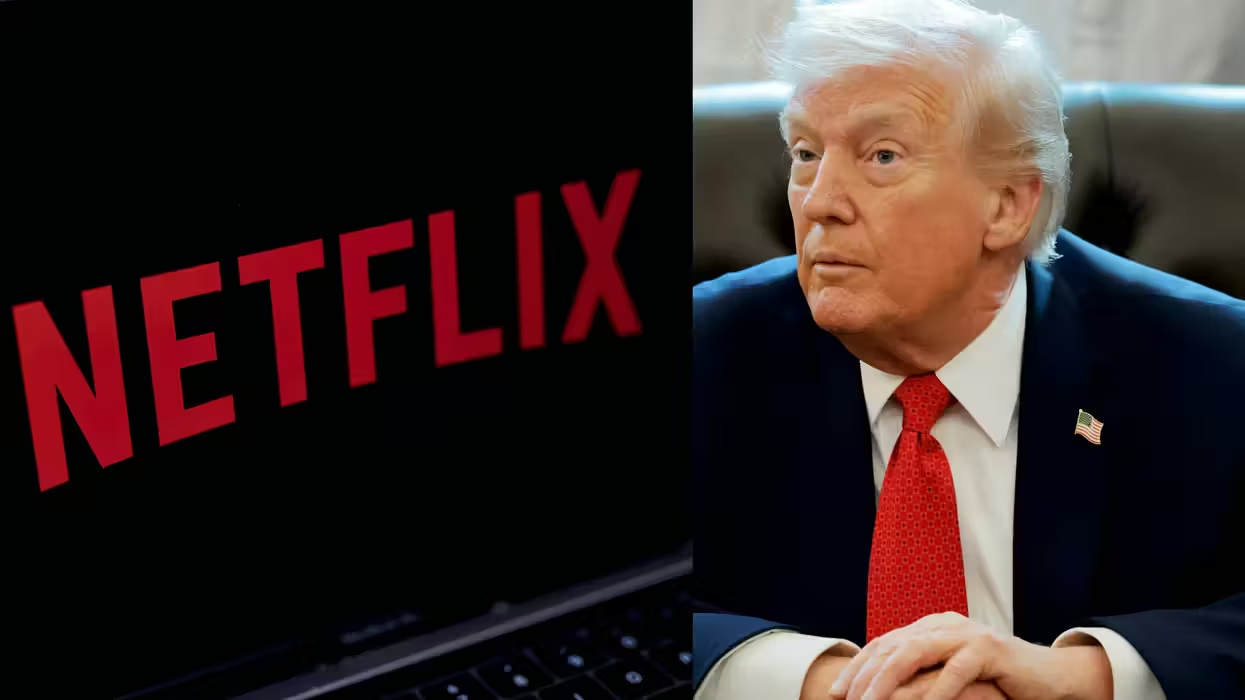
© 2025 Blaze Media LLC. All rights reserved.
So Much for the Savings? Energy-Cutting Measures Working So Well That Utility Customers Now Facing New Fees
January 30, 2013
"Somehow to me, the logic there does not make sense."
Last week, some customers of an Arizona utility company were a shocked by the notice they received along with their monthly bill. The bill stuffer informed them in the coming months they would see a new charge in light of the success of energy efficiency measures.
The new fees came as a shock to customers who had been sold on conservation measures in part because of the promise of the savings that would come from compact-fluorescent bulbs, low-flow toilets and other efficient practices.
 This billstuffer was included in APS customers' monthly statements alerting them to the new charge. (Image: Imgur)
This billstuffer was included in APS customers' monthly statements alerting them to the new charge. (Image: Imgur)
When APS customer Bill Plesha received this notice in the mail last week, he told the local news channel 3 On Your Side he was "upset" because his family had done "everything they have asked us to do, as have many other customers."
"Somehow to me, the logic there does not make sense," Plesha continued.
Other customers had similar thoughts as well:


ABC 15 reported Phoenix APS customer Gus Gaglio writing the company the following: “APS will give away CFL’s to help reduce the amount of electricity they sell to you. Top it off with a rebate for your new pool pump and/or replace the 'old' fridge…The cost will be passed on to you, the consumer."
Watch 3 On Your Side's report:
But these perspectives might not be the whole story.
With many states setting energy reduction goals and promoting efficiency efforts to meet them, TheBlaze looked into this situation to see if customers' response was justified or if there was more to the story behind the charge -- and if it is something more utilities nationwide experiencing similar losses from efficiency efforts would be enacting as well.
Ultimately, what it came down to is that customers need to be more aware when these decisions are made by state regulatory bodies in the first place and energy companies need to do a better job communicating the meaning of the new charge to them.
"When this amount was sent in the bills, [it] is when people really took notice," Arizona Public Service spokesman Damon Gross told TheBlaze in a phone interview. "It did seem to catch people by surprise."
What is 'Decoupling'?
When utilities -- be it electrical, gas or water -- sell less of their product to customers as a result of efficiency measures, it's a boon for both parties. The customer starts to see savings immediately on bills, while the utility, in the long term, might not have to replace aging infrastructure as much or as quickly.
But in the short term for utilities, Robert Thormeyer, a spokesman for the National Association of Regulatory Utility Commissioners (NARUC), said it goes against their business model. What some utilities, like APS and NV Energy in Nevada a couple years ago, are experiencing is fewer sales while their fixed costs remain the same.
Thormeyer told TheBlaze "decoupling" is a mechanism some utilities are turning to allow them to meet their fixed cost and maintain existing infrastructure adequately, while still promoting efficiency measures that would ultimately sell less of their resource.
The U.S. Environmental Protection Agency described decoupling in a reportas "a mechanism to remove throughput disincentives for utilities to promote energy efficiency without adversely affecting their revenues." In essence, what is being decoupled is the company's fixed cost recovery from the amount of product it sells.
As Thormeyer pointed out, decisions for utilities to decouple are made by state regulatory commissions and are something NARUC does not want the federal government to mandate, because it believe it is an issue that should be addressed locally. Four years ago, mandated decoupling was proposed as part of some of the stimulus package grants, but Thormeyer said NARUC fought hard to prevent it.
The decision that allowed APS to include a new charge on its bill was made through a rate settlement agreement last year by the Arizona Corporation Commission, during which time several different stakeholders made their cases.
Rebecca Wilder, communications director for the commission, told TheBlaze aggressive energy efficiency goals set by the state to be met by 2020 is what lead to a focus on conservation programs, customers using less and APS wanting to add an addition charge to meet their fixed costs.
Gross with APS, the largest energy provider in the state, said for the average customer, the new charge will be about $0.38 on each bill. The charge is more specifically .29 percent of the customer's bill -- but this can increase or decrease each year depending on fixed costs -- or customers can opt for a flat charge of $2.75 per month that wouldn't change for four years.
This new charge, Wilder said, is lower than what APS was initially asking for.
Even with a choice provided to customers for how to pay the new charge -- a flat rate or a potentially changing percentage -- Plesha told CBS 5 it doesn't make up for the fact that there's a new charge in the first place.
"I don't see them making efforts to make changes to efficiencies on their side," Plesha said. "All they're doing is passing costs on to customers."
Gross said there have been many lessons learned by APS regarding its communication strategy after customers seemed to be surprised and confused by the new charge that will begin in March.
Wilder said though customers should have been paying attention to it far earlier than last week.
"This is something that passed last May and people are just paying attention now," she said.
And should more customers around the country be expecting similar new charges to appear on their utility bills as well? Thormeyer said up to half of the states already have some sort of decoupling strategy for utilities. As infrastructure continues to age and conservation programs are brought in to reduce the strain on the system in an effort to make them last longer, it is a possible option for more utilities in the future, Thormeyer said.
"Rates will be going up regardless," he said though, noting that it is only a matter of time before structures well past their prime need to be replaced. "But more efficient customers will still save money."
Featured image via Shutterstock.com.
Want to leave a tip?
We answer to you. Help keep our content free of advertisers and big tech censorship by leaving a tip today.
Want to join the conversation?
Already a subscriber?
more stories
Sign up for the Blaze newsletter
By signing up, you agree to our Privacy Policy and Terms of Use, and agree to receive content that may sometimes include advertisements. You may opt out at any time.
Related Content
© 2025 Blaze Media LLC. All rights reserved.
Get the stories that matter most delivered directly to your inbox.
By signing up, you agree to our Privacy Policy and Terms of Use, and agree to receive content that may sometimes include advertisements. You may opt out at any time.






